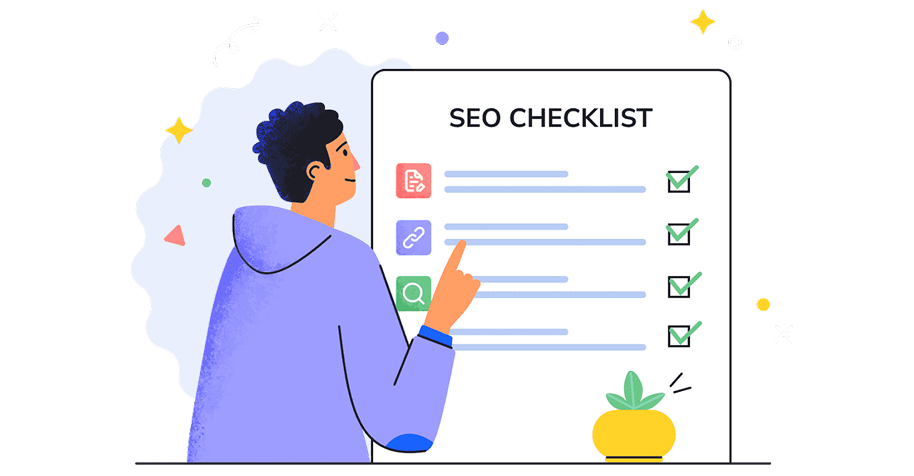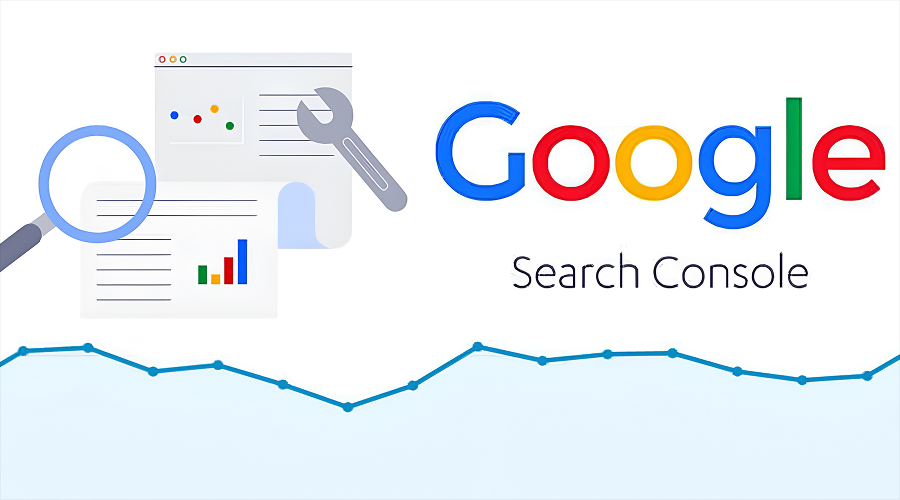
Launching a new website without SEO is like opening a store in a hidden alley – nobody will find it. Your website needs strategic optimization from day one to stand out in the crowded digital landscape.
Why SEO Matters for New Websites:
- Builds organic traffic from the start
- Creates a strong foundation for future growth
- Saves time and resources on later fixes
- Establishes credibility with search engines
The Ultimate SEO Checklist for New Websites serves as your roadmap to search engine success. This comprehensive guide covers essential elements from keyword research to technical optimization, ensuring you don’t miss critical steps in your website’s SEO journey.
Key Benefits of Following an SEO Checklist:
- Structured approach to website optimization
- Clear priorities for implementation
- Measurable progress tracking
- Competitive advantage in search rankings
Your new website has unique potential to rank higher when properly optimized from the beginning. This checklist helps you:
- Target the right keywords
- Build search-engine friendly architecture
- Create compelling content
- Implement technical SEO best practices
- Track and measure your success
Ready to boost your website’s visibility? Let’s dive into each component of this proven SEO checklist, starting with the foundation: keyword research.
1. Keyword Research

Keyword research is the backbone of any successful SEO strategy. This foundational step helps you understand what your target audience searches for and shapes your content creation approach.
➢ Essential Keyword Research Tools:
- Google Ads Keyword Planner: Access accurate search volume data and discover related keywords
- Moz’s Keyword Explorer: Analyze keyword difficulty and prioritize opportunities
- SEMrush: Uncover competitor keyword strategies and identify content gaps
➢ Smart Keyword Implementation:
- Place primary keywords in page titles and H1 headings
- Include secondary keywords naturally throughout your content
- Add relevant keywords in meta descriptions and image alt text
- Create URL structures that incorporate target keywords
➢ Your keyword research should focus on three main types:
- Short-tail keywords: Broad terms with high competition
- Long-tail keywords: Specific phrases with lower competition
- LSI keywords: Related terms that add context to your content
A balanced mix of these keyword types helps search engines understand your content’s relevance while maintaining natural readability for users. Track your chosen keywords’ performance through analytics tools to refine your strategy based on actual results.
2. Domain Name Selection
Your domain name is your online identity and it has a significant impact on your SEO success. Choosing the right domain name can improve your website’s visibility and make it easier for people to find you online.
➢ Key factors for selecting an SEO-friendly domain name:
- Keep it short and memorable (under 15 characters)
- Use your brand name or relevant keywords
- Avoid hyphens, numbers, and special characters
- Select appropriate domain extensions (.com, .org, .net)
- Check for trademark conflicts
➢ Impact on SEO rankings:
Having relevant keywords in your domain name can give you a slight SEO advantage, but don’t sacrifice branding by forcing keywords. Google’s algorithms prioritize user experience and content quality over exact-match domain names.
➢ Best practices for domain selection:
- Choose brandable names that reflect your business identity
- Ensure easy pronunciation and spelling
- Research competitor domain names in your niche to understand how others position themselves, and always aim to choose the best domain name that balances branding with SEO.
- Consider future expansion plans
- Verify domain availability across social media platforms
Your choice of domain name has long-term effects on brand recognition and search visibility. A clear and memorable domain makes it easier for users to find and remember your website, while also supporting your overall SEO strategy.
3. Web Platform Choice
Your choice of web platform is crucial for your website’s SEO success. A platform that is friendly to search engines allows them to effectively crawl and index your content, which directly affects your rankings.
➢ Popular SEO-Friendly Platforms
1. WordPress
- Built-in SEO features
- Extensive plugin ecosystem
- Customizable permalink structure
- Fast loading capabilities
- Regular security updates
2. Shopify
- Automatic sitemap generation
- Built-in SSL certificates
- Mobile-responsive themes
- Structured data implementation
- Automated 301 redirects
3. Wix
- SEO setup wizard
- Custom meta tags
- Mobile optimization tools
- XML sitemap creation
- SSL security included
➢ Key SEO Features to Look For
- URL Structure Control: Your platform should allow you to create clean, customizable URLs that include your target keywords.
- Mobile Responsiveness: Built-in mobile optimization features help maintain consistent performance across all devices.
- Page Speed Optimization: Look for platforms with:
○ Image compression tools
○ Caching capabilities
○ Code minification options
○ CDN integration - Content Management: The platform should offer:
○ Easy content updates
○ Meta description customization
○ Header tag management
○ Image alt text editing
➢ SEO Improvements Through Platform Features
A robust platform enables quick implementation of:
- Schema markup for enhanced search results
- XML sitemaps for better indexing
- Robots.txt file management
- Canonical URL settings
- Social media integration
- Analytics tracking
Your chosen platform should support these technical SEO elements without requiring extensive coding knowledge. This accessibility allows you to focus on creating quality content while maintaining strong SEO fundamentals.
4. Themes and Plugins Selection
Your choice of themes and plugins directly impacts your website’s SEO performance. A poorly coded theme can slow down your site and create technical SEO issues, while the right combination can boost your search engine rankings.
➢ Essential Theme Selection Criteria:
- Clean, lightweight code structure
- Regular security updates
- Built-in schema markup support
- Mobile responsiveness
- Fast loading speeds
- SEO-friendly HTML structure
➢ Recommended SEO Plugins:
- Yoast SEO or Rank Math for WordPress
- SEO Manager for Shopify
- SEO Suite Ultimate for Magento
➢ Speed Optimization Plugins:
- WP Rocket or W3 Total Cache for caching
- Smush or ShortPixel for image optimization
- Asset CleanUp for resource management
➢ Plugin Selection Best Practices:
- Install only necessary plugins
- Check plugin ratings and reviews
- Verify compatibility with your platform version
- Monitor plugin impact on loading speed
- Test plugins in staging environment first
Running speed tests before and after installing new themes or plugins helps maintain optimal performance. Use tools like GTmetrix or PageSpeed Insights to measure impact on loading times.
Remember to delete unused plugins and themes, as they can create security vulnerabilities and unnecessary server load. Keep your active plugins updated to ensure compatibility and maintain security standards.
A well-optimized theme combined with carefully selected plugins creates a solid foundation for your SEO efforts. Regular maintenance and updates of your chosen tools ensure consistent performance and search engine visibility.
Additionally, it’s crucial to consider mobile SEO during the theme selection process. With an increasing number of users accessing websites via mobile devices, having a mobile-responsive theme is no longer optional but a necessity.
5. Site Structure Planning and Navigation Design
A well-planned site structure creates a solid foundation for both user experience and search engine optimization. Your website’s architecture should follow a clear hierarchy, starting from your homepage and branching out to category pages and individual posts or products.
➢ Key pages and individual posts or products.
- Keep important pages within 3 clicks from the homepage\
- Create logical categories and subcategories
- Use breadcrumb navigation for deeper pages
- Include internal links between related content
- Build a clear URL structure reflecting your site hierarchy
Your navigation menu serves as a roadmap for visitors and search engines. A user-friendly navigation system helps visitors find what they’re looking for quickly while enabling search engines to understand your site’s content organization.
➢ Navigation Design Best Practices:
- Place main navigation in a prominent location
- Limit main menu items to 7-8 options
- Use descriptive labels for menu items
- Add a search function for larger sites
- Include footer navigation for secondary pages
The structure of your website directly impacts its crawlability. Search engines use your site’s hierarchy to determine the relationship between different pages and their relative importance. A flat architecture – where pages are accessible through minimal clicks – distributes link equity more effectively and improves the chances of your content being discovered and indexed.
➢ Site Structure Tips for Better SEO:
- Create a detailed sitemap
- Link related content naturally
- Balance the number of pages in each category
- Use descriptive anchor text for internal links
- Implement schema markup to clarify content relationships
6. URL Optimization and Mobile-Friendly Design

➢ URL Optimization
Clean, descriptive URLs play a crucial role in your website’s search engine rankings. Your URLs should:
- Include relevant keywords
- Use hyphens to separate words
- Stay short and concise
- Avoid special characters
- Reflect page content accurately
Example of a poor URL: www.example.com/p=123?id=456
Example of an optimized URL: www.example.com/seo-checklist-new-websites
➢ Mobile-First Design
Google prioritizes mobile-friendly websites in search rankings, making responsive design essential. A mobile-optimized website needs:
- Fast loading speeds on all devices
- Readable text without zooming
- Properly spaced clickable elements
- No horizontal scrolling
- Compressed images
You can test your website’s mobile-friendliness using Google’s Mobile-Friendly Test tool. The test provides specific recommendations for improvements and highlights potential issues affecting mobile users.
➢ Key Mobile Design Elements
Your mobile design should incorporate:
- Responsive images that adjust to screen size
- Touch-friendly navigation menus
- Visible call-to-action buttons
- Adequate font sizes (minimum 16px)
- Proper viewport configuration
A well-optimized URL structure combined with mobile-friendly design creates a solid foundation for search engine visibility. These elements work together to improve user experience and signal to search engines that your website deserves higher rankings.
7. SSL Certificate Installation and Search Engine Indexing Optimization
SSL certificates serve as digital passports for your website, establishing secure connections between your server and visitors’ browsers. Google prioritizes secure websites in search rankings, making SSL installation a crucial step in your SEO strategy.
➢ Key Benefits of SSL Certificates:
- Encrypts sensitive data transmission
- Builds trust with website visitors
- Improves Google search rankings
- Displays the secure padlock icon in browsers
- Prevents data tampering and cyber attacks
You can obtain an SSL certificate through your hosting provider or third-party certificate authorities like Let’s Encrypt, Comodo, or DigiCert. After installation, ensure your website redirects all HTTP traffic to HTTPS.
➢ Search Engine Indexing Best Practices:
Your robots.txt file acts as a guide for search engine crawlers, telling them which pages to index and which to ignore. Place this file in your root directory with clear directives:
User-agent: * Allow: / Disallow: /private/ Disallow: /admin/
Meta tags provide additional instructions to search engines about your content. Include these essential meta tags:
- Allows indexing and link following
- Describes your page content
- Specifies preferred page versions
Monitor your website’s crawl status through Google Search Console to identify and fix potential indexing issues. Check for:
- Crawl errors
- Index coverage problems
- Security issues
- Manual actions
Regular audits of your robots.txt file and meta tags help maintain optimal crawlability and indexing of your website’s content.
8. Submitting Your Website to Google Search Console and Local SEO Strategies

Google Search Console serves as your direct line of communication with Google’s search engine. This powerful tool helps you monitor and maintain your site’s presence in Google Search results.
➢ Key Benefits of Google Search Console:
- Track your website’s search performance
- Identify and fix technical issues
- Submit new content for indexing
- Monitor mobile usability
- Analyze click-through rates
- Receive alerts about security issues
To submit your sitemap, access Google Search Console and navigate to the “Sitemaps” section. Enter your sitemap URL (typically yourdomain.com/sitemap.xml) and click “Submit.” This process accelerates Google’s discovery of your new pages and helps maintain fresh content indexing.
➢ Local SEO Enhancement with Google My Business
A Google My Business profile amplifies your local search visibility. Here’s how to optimize your listing:
- Add accurate business information
- Choose relevant business categories
- Upload high-quality photos
- Collect and respond to customer reviews
- Post regular updates about products or services
- Include your business hours and special holiday schedules
Your Google My Business profile appears in local search results, Google Maps, and the Knowledge Panel. This visibility drives foot traffic to physical locations and increases website visits from local customers.
Pro Tip: Keep your Google My Business information consistent with your website details. Search engines value this consistency when determining local search rankings.
Regular monitoring through Google Search Console combined with an optimized Google My Business profile creates a strong foundation for local search visibility. These tools provide valuable insights into your website’s performance and help identify areas for improvement in your SEO strategy.
9. Content Strategy Development And Primary Keyword Targeting per Page
A well-planned content strategy serves as the backbone of your website’s SEO success. Here’s how to develop a content strategy that drives results:
➢ Create a Content Calendar
- Map out your content topics for the next 3-6 months
- Plan seasonal content in advance
- Schedule regular content updates
- Track content performance metrics
➢ Keyword Assignment Strategy
- Assign one primary keyword per page
- Include 2-3 related secondary keywords
- Place keywords naturally in:
○ Page titles
○ Headers (H1, H2, H3)
○ Meta descriptions
○ First 100 words of content
○ Image alt text
➢ Content Quality Guidelines
- Write comprehensive content (1,500+ words for pillar pages)
- Break text into scannable sections
- Include relevant statistics and data
- Add visual elements (images, infographics, videos)
- Link to authoritative sources
- Update content regularly
Your content should solve specific problems or answer questions your target audience is asking. Research shows that pages targeting specific search intent rank higher in search results.
➢ Content Types to Include
- How-to guides
- Industry insights
- Case studies
- Product comparisons
- Expert interviews
- FAQ pages
Remember to maintain keyword density between 1-2% to avoid over-optimization. Focus on creating value-driven content that naturally incorporates your target keywords while addressing user needs and search intent.
In order to enhance your understanding of various aspects of SEO and content creation, you might find it useful to explore this comprehensive glossary which provides detailed definitions and explanations of key terms used in the industry.
10. Multilingual SEO Preparation (if applicable)
Expanding your website’s reach to non-English speaking audiences requires careful multilingual SEO preparation. Here’s what you need to focus on:
➢ Proper URL Structure
Create language-specific URLs using either:
- Subdirectories (example.com/fr/)
- Subdomains (fr.example.com)
- Country-specific domains (example.fr)
➢ Hreflang Tag Implementation
These tags help search engines understand language relationships between your pages and serve the right content to users.
➢ Content Localization Best Practices
- Avoid machine translation – invest in professional translation services
- Adapt content for cultural nuances and local preferences
- Research region-specific keywords rather than direct translations
- Create unique meta descriptions and title tags for each language version
➢ Technical Considerations
- Use UTF-8 encoding to support multiple character sets
- Set up language-specific XML sitemaps
- Configure geo-targeting in Google Search Console
- Enable language detection and redirection scripts
➢ Local Market Research
- Study popular search engines in target regions (Baidu, Yandex)
- Analyze local competitors’ SEO strategies
- Understand regional search patterns and user behavior
- Research local regulations affecting website content
Remember to maintain consistent branding across all language versions while respecting cultural differences. This approach helps build trust with international audiences and improves your chances of ranking in local search results.






